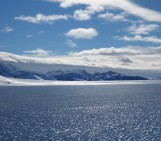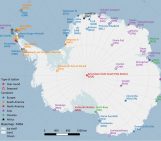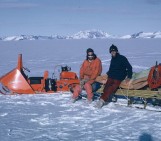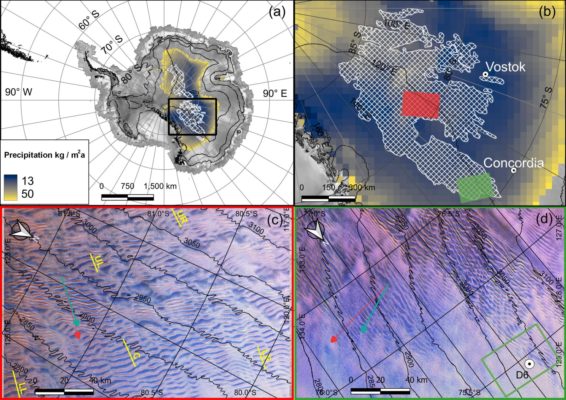
When we think of dunes our thoughts automatically go to deserts and sand. But on Earth, as well as on other celestial bodies of the solar system, dunes exist also in a completely different environment. I am talking about gigantic dunes consisting of snow. On Earth they are called megadunes and you can find them only in East Antarctica, where they extend for thousands of km. If you want to know more about them, read on!
Antarctica is divided into three main glaciological regions: the Antarctic peninsula, West Antarctica and East Antarctica. The latter, which is divided from West Antarctica by the Transantarctic Mountains. East Antarctica hosts the largest ice sheet of Earth, with a record thickness of ice of over four kilometers and lowest temperatures. The East Antarctica region resulted from the merging of several gigantic glaciers. Yet, similarly to water divides, they are divided by the so-called ice divides. These are the lines separating opposing flow directions of ice.
The southern part of the main ice divide of East Antarctic harbors this extraordinary natural phenomenon known as megadunes. Exclusive to the East Antarctic Plateau and also found on celestial bodies like Mars and Pluto, they emerge as a consequence of the intricate interplay between the atmosphere and cryosphere. They are called megadunes as their size is really notable: typically, a single dune extends for about 3 km in length, reaching a height of 2-4 m. The dune migration is predominantly driven by the gradual accumulation of snow on the crest (top of the dune) and trough (base of the dune), causing the megadunes to progress steadily in an upwind direction (in other words, moving against the wind direction, behaving differently than the other dunes, see Fig. 1). This progression, in turn, leaves behind glazed surfaces on the previous windward flanks, accentuating the “antidunal” nature of these extraordinary landforms. To unravel the secrets held by these features, which are located in such remote and inaccessible areas, I needed the support of satellite images.
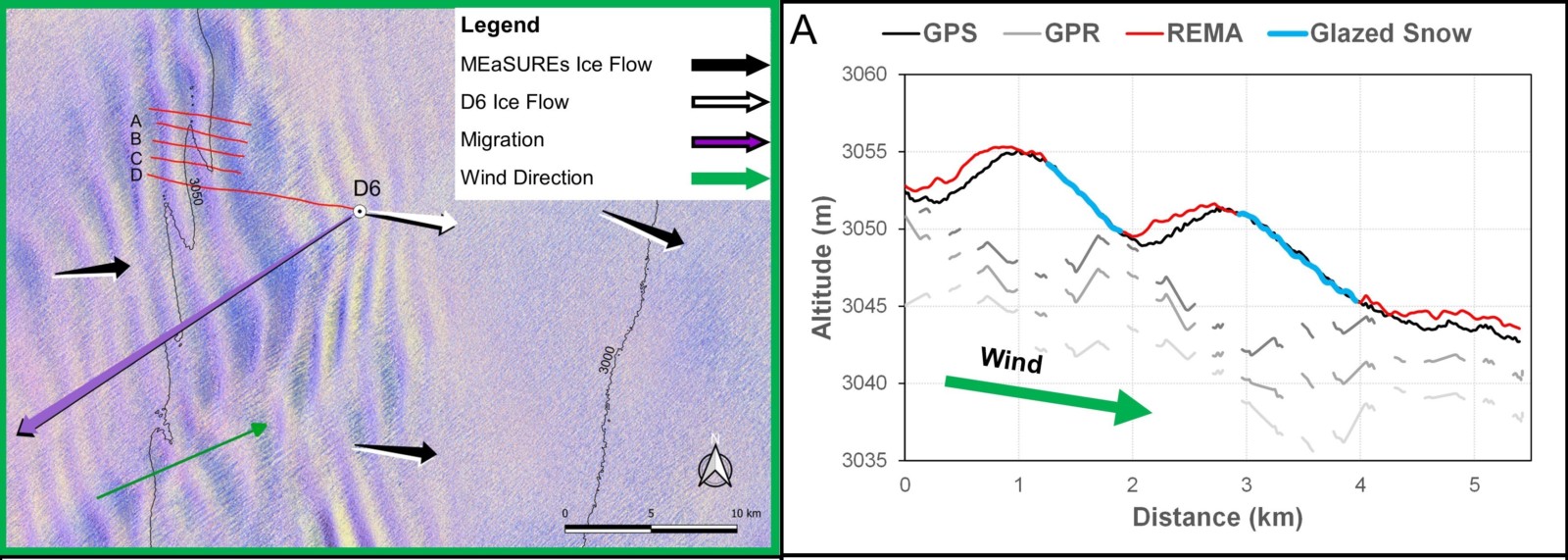 Figure 1: Location of the GPS transects (red) with a false-colour Landsat 8 OLI image in the background (18 December 2014). Topographic section of a transect (A), with the black lines representing elevation from in situ GPS observations (1999), red lines from the REMA DEM (2014) and blue lines from glazed snow detected on the Landsat image from 18 December 2014 (modified from Traversa et al., 2023).
Figure 1: Location of the GPS transects (red) with a false-colour Landsat 8 OLI image in the background (18 December 2014). Topographic section of a transect (A), with the black lines representing elevation from in situ GPS observations (1999), red lines from the REMA DEM (2014) and blue lines from glazed snow detected on the Landsat image from 18 December 2014 (modified from Traversa et al., 2023).
In a recent scientific endeavor, I delved into the dynamics, spectral properties, and morphology of megadunes of two distinct areas of the East Antarctic Plateau (Traversa et al., 2023). In fact, I wanted to investigate how these megadunes move, or migrate, as we say. In addition, I analyzed the spatial and temporal variations of megadunes, focusing on their optical and spectral properties and on their morphology in relation with the local environmental conditions, such as prevailing winds. These valuable parameters helped me in mapping them and identifying the glazed snow surfaces, one of the two types of ablation areas in Antarctica (together with blue ice areas), which characterize a side of the snow dunes. Our study shed light on this process, providing insights into their migratory patterns. I found that the upwind migration rate of megadunes approximates 10 meters per year, in accordance with some previous local-scale surveys (Fig.1).
This is a first step towards understanding the Antarctic megadunes, but the implications of these findings also significantly improve the estimation of surface mass balance of the inner Antarctic ice sheets. This is a crucial parameter to understand the delicate equilibrium between snow precipitation and loss on the surface of the Antarctic Ice Sheet (see the blog post on Antarctic surface mass balance here). Shedding light on the intricacies of megadunes and especially on their glazed-snow sides (ablation surfaces) is in fact important to gain a deeper comprehension of the Antarctic climate system and its potential implications for global sea-level changes. In addition, our study’s outcomes offer novel insights into the interpretation of optical and radar images/data within megadune-rich regions.
In summary, the fascinating world of Antarctic megadunes reveals a blend of atmospheric and cryospheric dynamics. The more we learn about the dynamics and extend of megadunes, the better we might predict global phenomena such as sea-level change in the future. Last but not least interesting, a better comprehension of Antarctic megadunes would be of help also for further researches on Martian and Plutonian dunes.
Further reading
- Traversa et al. (2023) “Megadunes in Antarctica: migration and characterization from remote and in situ observations” The Cryosphere 17: 427-444, DOI: 10.5194/tc-17-427-2023.
Edited by Giovanni Baccolo & Maria Scheel
 Giacomo Traversa is a postdoctoral researcher at the Institute of Polar Sciences of the Italian National Research Council. His research concerns the use of satellite images for the estimation of optical and thermal properties of glaciers at the margins of the Antarctic Ice Sheet, as well as the analysis by remote sensing of ablation areas in Antarctica, i.e., wind crust and blue ice, with particular attention to the snow megadune fields on the Antarctic plateau. He tweets as @TraversaGiacomo.
Giacomo Traversa is a postdoctoral researcher at the Institute of Polar Sciences of the Italian National Research Council. His research concerns the use of satellite images for the estimation of optical and thermal properties of glaciers at the margins of the Antarctic Ice Sheet, as well as the analysis by remote sensing of ablation areas in Antarctica, i.e., wind crust and blue ice, with particular attention to the snow megadune fields on the Antarctic plateau. He tweets as @TraversaGiacomo.
Contact email: Giacomo.traversa@isp.cnr.it


